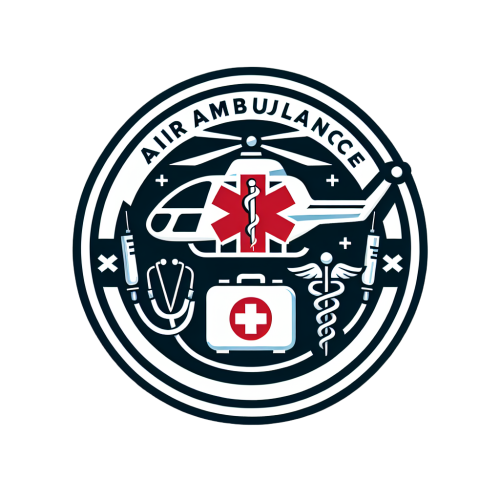Air Ambulance Transport Jobs
An air ambulance, as the name suggests, is an ambulance service that uses a helicopter or fixed-wing aircraft to transport sick or injured patients from one place to another.
Air ambulance services include emergency evacuation services from the scene of an accident or disaster, routine transportation of patients from one place or country to another, and critical care services from low to high levels of medical care. EMS jobs.
Air ambulance services employ health care professionals, pilots and aircraft mechanics.
List of Aviation Jobs
If you enjoy getting up in the wild blue, working on an airplane allows you to climb above the clouds in a variety of positions. Jobs on airplanes range from highly paid and highly trained pilots to cabin service agents who clean and stock the plane after passengers disembark.
The pilot
Whether it’s an Airbus with a couple of hundred passengers headed to Asia or a private jet with a handful of passengers flying a couple of hundred miles, all airplanes need a Pilot, first and foremost, to let them fly. Commercial pilots can offer tours, spray crops from above or fly air ambulances and help with some non-flight duties. These pilots are required to hold a Federal Aviation Administration-issued pilot’s licence and a high school diploma (FAA). Airline pilots fly passenger and cargo planes and must have a bachelor’s degree.
Pilots carrying passengers must have a commercial pilot’s license and an instrument rating. Many pilots learn their skills in the military, but civilian flying schools also offer an associate’s or bachelor’s degree. To qualify for a commercial license an applicant must be at least 18 years of age and have at least 250 hours of flight experience. Pilots must also pass psychological aptitude tests for many organizations. Air ambulance pilots require special skills and must fly in conditions that the average commercial pilot would not encounter, especially in emergency rescue situations. Medical helicopters, for example, often land in precarious situations in a field or on a hospital roof in a city.
Both types of pilots must complete thousands of hours of in-flight training to advance in regional or major airlines. Pilots who obtain an instrument rating may fly during low visibility. Airline Transport Pilot (ATP) certification is earned by having a minimum of 1,500 hours of flight time and passing a written and in-flight exam. Airline pilots must be at least 23 years old and retire at 65. Airline pilots earn an average annual salary of $137,330, while commercial pilots are paid $78,740. From 2016 to 2026, the number of pilot jobs is expected to grow by only 4 per cent, reflecting the use of newer, larger aircraft that can accommodate more passengers.
Copilot
The copilot, or second in command, is occasionally referred to as the first officer, whereas the captain, or principal pilot in command, is called the captain. A copilot shares flight duties with the pilot but often has less experience.
Flight Physicians
Flight physicians are typically specialists in emergency medicine and many are board-certified, a qualification that some employers may require. Emergency medicine is a medical specialty that requires a specialized training period of three years. Emergency medicine physicians must be able to quickly recognize acute illness and injury and provide life-saving treatment to the patient immediately. They must have current certification in advanced cardiac life support, basic life support and pediatric life support.
Air hostess
Flight attendants do more than just take drink orders. They perform pre-flight emergency equipment inspections and demonstrate safety protocols before take-off. They also ensure that passengers have their seat belts securely fastened in case of turbulence and guide them off the plane in case of an emergency. In addition to providing food service and selling alcoholic beverages, flight attendants provide items such as blankets and earphones.
Flight attendants must have a high school diploma and be certified by the FAA through training and examination by the employer. Many people work in a customer service type of job, such as in a restaurant, for a year or two before becoming flight attendants. The average salary is $50,500 per year. The need for flight attendants is expected to increase by 10 per cent from 2016 to 2026, as newer aircraft can accommodate more passengers and the retirement of longtime flight attendants.
Nurses and Paramedics
Although air ambulance staffing patterns vary from transport to transport, one or more medical professionals are always with the patient. The two most common career options in air ambulance work are flight nurse and flight paramedic. A flight nurse is a licensed registered nurse with significant emergency resuscitation experience and certification who has completed a flight nurse training and orientation program. Flight paramedics must have similar resuscitation certifications, experience in an emergency medical services environment and may be required to complete a flight program approved by the Department of Transportation in the states where they practice.
What does a helicopter nurse do?
Helicopter flight nurses are members of an aeromedical evacuation team of pilots, medics and air and communications personnel and mechanics on the ground. Medical personnel at the scene of the disaster tend to the patient’s critical needs until a flight nurse arrives to provide more intensive treatment.
The helicopter nurse manages the patient’s care, trying to maintain his medical stability and keep him comfortable during the flight. A flight nurse also helps plan and prepare for rescue missions. In the absence of a physician, a flight nurse performs initial critical care procedures. The ability to think clearly and intervene appropriately can make all the difference in a patient’s survival and recovery.
Obtain nursing credentials and skills.
Initial flight nurse training can begin with a two-year associate degree in basic nursing and passing the RN licensing exam. However, employers increasingly prefer bachelor’s or master’s degree-level training in nursing. Because of the intense job demands, flight nurses need at least five years of experience in an intensive care unit, emergency room or another intensive care hospital to be competitive when applying for a nursing job on a rescue helicopter.
Pursue a nursing specialization.
Many schools and professional organizations around the world offer postgraduate training for RNs, including ground and flight emergency services training. Completing training and certification in emergency nursing can be beneficial when competing for coveted flight nurse jobs.
Flight nursing programs prepare students for emergency nursing and critical care management, including advanced cardiac life support, neonatal resuscitation, pediatric advanced life support and prehospital trauma life support. Students are taught how to provide hemodynamic support, which ensures that the patient’s blood circulates properly, and mechanical ventilation helps the patient breathe. They also learn that vasoactive drugs, such as dopamine and norepinephrine, increase blood pressure and cardiac output.
Federal Air Marshal
While they aren’t on every plane, federal air marshals travel incognito but are ready to jump in to thwart a hijacking or other terrorist incident. Federal Transportation Security Administration marshals require a bachelor’s degree and three years of work experience. Prospective marshals undergo intense screening, including a criminal background check, criminal background history check, panel interview and medical and psychological evaluations. They then undergo 14 weeks of training in subjects such as firearms, self-defence in close quarters and terrorist identification. Marshals receive a wide salary range, starting at $39,358, reflecting their duties and years of experience. The highest-paid air marshal supervisors can make up to $132,237 annually.
Mechanics
In addition to the mechanical aspects of the aircraft itself, an air ambulance also has specialized emergency medical equipment that may be integrated into the structure or operation of the aircraft, such as suction or oxygen used by the patient. Mechanics should have a minimum of 18 months of experience or 30 months combined experience in power plants or airframes.
Cabin Service Agent
After several hours in the air, an airplane can become a mobile germ factory filled with discarded magazines and forgotten sweaters. Cabin service agents are members of the ground crew who vacuum carpeting, clean toilets, clear tray tables and repack luggage. Most have a high school diploma.


